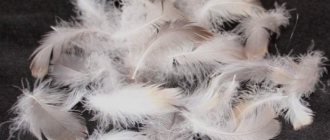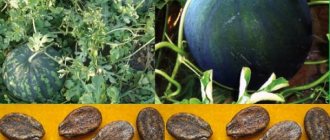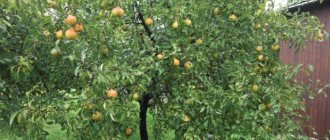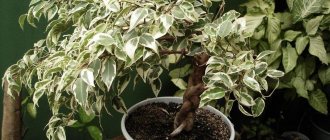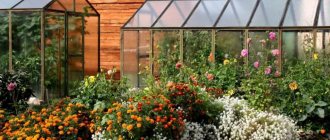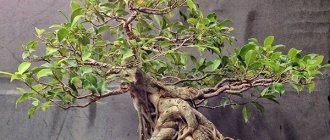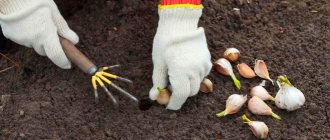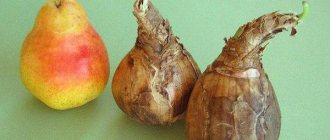What should the drinking bowl be like?
When raising ducks, it is worth keeping in mind that they consume a lot of liquid due to their high metabolic rate, so it is important that fresh and clean water is freely available around the clock.
The volume of fluid consumed is influenced by factors such as the age of the bird, the amount of food and temperature. One adult uses about 1.65 liters of water per day.
The drinking bowl must be made of good quality materials that do not rot and are resistant to temperature changes. It should also be easy to clean and durable enough.
Most often it is made of high-quality plastic with well-finished edges. The edge must be absolutely smooth, or you must put a special rubber rim on it.
You can either make a duck drinker yourself from the materials you have at hand, or buy a ready-made one in a specialized store.
Useful tips
When purchasing or making feeders and drinkers, consider a few more points:
- Containers are selected and installed so that there is water in them constantly. This is important for the proper development and health of ducks. One bird drinks approximately 270–300 liters per year. In the first days of life, ducklings need up to 0.03 liters per day. By a month this norm increases to 300 ml.
- Some farmers install “dual-use” sippy cups. They are also used for bathing ducks. This is not entirely correct. Ducks need plenty of clean water to drink and a full bath. Otherwise, health problems arise - the immune system weakens, the reproductive system weakens, and the sebaceous glands cannot cope.
- If the sippy cups are open, choose deep and narrow models. With this design, it is more convenient for ducks to immerse their heads.
- They are thinking about installing more practical automatic drinkers. Particularly useful on large farms.
- Some poultry keepers simply scatter feed around the pen. It's not economical. The ducks will trample most of the food. To combat losses, open feeders are filled to about a third. Additionally, protection is sometimes installed to prevent paws from climbing.
- Feeders and drinkers for ducklings are made one size, for adults - another. Design features and dimensions depend on the age of the bird.
Duck waterers and feeders are chosen or done correctly. It is important to provide the livestock with not only adequate nutrition with fresh and clean food, but also constant access to water for drinking and “water procedures.”
Features of drinkers for small ducks
It is especially important for children to keep the water clean and avoid spilling, because if they get wet, they can very easily contract an infection. Drinking bowls for ducklings must comply with the following rules:
- The depth of the container should allow the chick to completely immerse his head in it to clear the nasal passages.
- There should be an opportunity for ducklings to bathe.
- Water must be available around the clock and without interruption.
- The container should be easy to clean and disinfect properly.
It is very important that water is freely available for ducklings at any time of the day. Babies up to 5 days from birth need water at room temperature. At 10 days of age, you can already use a metal drinker.
In winter, ducklings need to warm up their drinking water a little.
The average length of the drinking structure is about 20 cm, and the width of the walls is no more than 3 cm, so that children can comfortably reach the water. Little ducklings love to splash and spill water on the floor, so you can place a wide container with a mesh on top under the bottom of the container. They grow very quickly, so it is better to choose the most economical drinker option.
Rules for making feeders
Making a feeder is quite simple, but there are some nuances. It is necessary that the ducks feel comfortable approaching it and eating. But that is not all. Assemble the feeder in such a way that in the future you can easily place food there for birds, clean and wash them with disinfectant solutions. Made from high-quality building materials, it will last a long time.
You can make a feeder with your own hands at home. It can resemble a small trough, no more than 25 cm deep. Excellent building materials are: boards, lumps, bars, any scraps of wood. These duck feeders are convenient for placing both dry and wet food. It is advisable to place not all the food in the finished structure, but about 30% of its volume. To prevent ducks from crowding around the feeder and scattering food, it should be made long with raised sides.
There are differences in feeders for different types of feed: green, dry and wet mash. To assemble the structure, you must know the age and size of the duck. For adult birds, feeders are made 15 cm long for wet food, and 6 cm long for dry food. For twenty-day-old ducklings, small feeders are suitable, only 5 cm for mash and 3 cm for dry feed. For older ducklings, feeders measuring 12 cm for wet food and 5 cm for dry food will do.
Grooved feeders for ducks. A - for feeding adult birds, B - for ducklings
Using the bar, ducks can climb into the feeder and dispose of food as they wish. It will also serve as a convenient handle when moving the feeder to a new location. Products for mineral feed such as gravel, lime and shell must be made with at least three sections. It is better to fix them on the wall no higher than 20 cm. For small birds, the feeder should be 5 cm high, 15 cm wide, and 100 cm long.
The last option can be made of wooden material with a slight slope. If there are a lot of ducks, then the feeder should be long so that they all fit. It is better to attach grass feeders in the center of the house on the wall, for convenient access to food from any side.
Features of drinkers for adult ducks
When choosing a drinker for ducks, it is important to correctly calculate the number of containers and their position. For adult birds, they should be shallower and wider than those used for young birds.
Basic requirements for sippy cups:
- Ease of use;
- location at a comfortable height;
- it must be closed so that dirt does not get into it;
- easy to wash;
- water from it should not spill around.
For adult individuals, it is important to strengthen the drinking bowls very firmly so that there is no possibility of dropping the containers and splashing water. In addition, adult individuals like to climb directly into drinking water and swim, polluting it in the process, so it is better for them to choose closed nipple containers.
Requirements and dimensions
Ducks need a lot of water.
Ducks are very messy birds, they scatter food and love to swim. If the water in the house is openly available, they will definitely climb into it to swim. This is not very correct, since the drinking liquid should always be clean and the bedding dry. Otherwise, in damp conditions, birds will often get sick and may even die.
What are the requirements for duck drinkers:
- The size of the product depends on the number of individuals in the poultry houses. It is necessary to install such structures that can fully satisfy the liquid needs of birds. Large poultry houses will require several large structures;
- When choosing a drinking bowl, it is necessary to take into account the characteristics of birds. Indians love to swim. Therefore, in addition to drinking water facilities, poultry houses need to be equipped with containers for swimming in the summer. It is advisable to install them away from drinking bowls and use shallow basins for this;
- Drinking structures must be easy to clean and disinfect. For this, it is best to use shallow, narrow drinkers. They take up little space and are easy to clean;
- Separate containers should be provided for ducklings. They should fit correctly and be comfortable. Automatic waterers for ducklings are suitable for these purposes. For a small number of young animals, you can equip simple homemade structures.
Advantages and disadvantages of different types of drinkers
There are different types of drinkers, each of which has its own advantages and disadvantages. You will learn more about the pros and cons of different drinking bowls below.
Deep water tank
This is the simplest drinking bowl available to everyone. You can use any bowl or basin with water as it. The advantages of such a drinking bowl include its lightness, simplicity and low cost.
But it still has more disadvantages, of which the following can be noted:
- open water is easily polluted;
- due to contamination, the water must be constantly changed;
- such a container cannot provide water for a large number of birds;
- it can easily turn over from a push or careless movement of the bird.
Vacuum
The main advantage of such a drinking bowl is the very economical consumption of water, since it maintains the same water level for a long time. In addition, there will always be fresh water in it due to the self-filling tray; the main thing is to always monitor the presence of water in the bottle.
Like the nipple drinker, this is a closed drinker, which means that various debris and droppings will not get into it, and the water will always remain clean. This is necessary to avoid diseases in ducks.
The disadvantages include the very light weight of the structure, due to which it can be overturned. But it still has many more advantages, which is why this model is especially popular among farmers.
Nipple (nipple)
It is one of the simplest and most convenient drinkers. It is very easy to clean, but you need to fill it with water manually. In stores you can find a more modern model, which is connected to a water supply or water tank.
In this type of sippy cup, it is very important to correctly calculate the number of nipples. The optimal quantity is 10 ducks per drinking hole.
The liquid is supplied in doses, which means that the water in the drinker always remains clean and fresh. The main thing is to fill the main tank on time. For ducks, nipples with large nipples and good flow are best.
There is no need to get used to it; the birds quickly understand that to get water you just need to press the nipple.
Grooved
Has the following advantages:
- inexpensive price;
- easy to manufacture;
- durable;
- due to its length, it provides access to water for a large number of birds at the same time;
- easy to clean and wash;
- With such a drinker, ducks can not only drink, but also dip their heads in it in hot weather and wash their beaks.
The disadvantages of such a drinker include its heavy weight, which can be traumatic for birds if the pipe is not well strengthened. Also, the water in such a drinking bowl often becomes contaminated, and it must be changed periodically. Due to the large weight of the pipe, changing the water will require the help of a second person each time.
Professional nipple drinkers for broilers
Nipple drinkers should be included in a separate group - these are modern devices that have only positive qualities. The design of the nipple is quite complex to make with your own hands, so it would be better to buy such a drinking bowl element separately and make the body yourself. The advantages of nipple irrigation are as follows:
- Dosed feed. The bird will not be able to spoil the water, since it will drink only the volume it needs. When the valve is pressed, water flows; as soon as the valve is not pressed, the water supply is stopped.
- Lack of pathogenic bacteria. Dirt, dust and microorganisms do not enter the water, so the risk of epidemic disease in birds is eliminated.
- Versatility of installation and quick replacement of parts. Thanks to threaded connections, as well as quick-release housings, it is easy and simple to repair the structure at home.
- Possibility of autonomous and automated water supply. Such a system can be connected to a tap so that water is always supplied to the bird, even during your absence.
- Unlimited service life due to the use of a simple and effective water distribution system.
- Saving. Water use can be 50 times less than with conventional drinking systems. You need a few of them, 1 nipple = 35-40 heads of young birds.
- Suitable even for one-day-old chicks. They automatically get used to drinking from such nipples, because they see a drop of water and feel the moisture, and with only 4 grams of force on the button, the water begins to flow.
Nipple designs are the most modern approach to poultry farming. Their only drawback is that they are difficult to make with your own hands, and 1 such device costs about 400-500 rubles.
If you equip your chicken coop with homemade equipment, you can save a lot and increase the profitability of poultry farming!
Instructions for making your own drinking bowls
Making a sippy cup yourself will not take much time and effort. Each of the designs is convenient to use; it does not require constant monitoring of the amount of water, because when consumed, it is independently replenished in the container due to the weight of the birds.
Automatic drinker made from a plastic bottle or canister
Such a drinking bowl will be especially convenient for adult birds. To make such a drinking bowl, place a bottle of the required volume in a regular basin. Make a hole with a diameter of 1.5 cm in its lower part; your finger should completely cover the hole.
When pouring water into the bottle, close the hole with your finger, then place it in the basin, and you can remove your finger. The drinking bowl is ready. Now the water is poured through the hole into the pan, and when consumed, it will be replenished on its own.
How this looks in practice is shown in the following video:
Trough drinker from a sewer pipe
It will be the most durable and suitable for ducks of any age. The grooved sippy cup is easy to use and very simple to make. To make a trough drinker, take a piece of sewer pipe of the required length.
Then make the required number of holes in it and secure it on a special stand. A plug is placed at one end of the pipe, and an angle is attached at the other end along which water is poured.
How to make such a drinker is shown in the video below:
An important point in using such a drinking bowl is its reliable strengthening. Care must be taken to ensure that the pipe does not fall on the birds under any circumstances, otherwise they will be seriously injured.
You can make an autonomous version of a drinking bowl from a sewer pipe, which will save time on servicing poultry. The design of such a drinker is shown in the following video:
Nipple drinker
This species is best suited for young animals. Its use is similar to how animals obtain milk from the breast, which is why it is also called the nipple.
It is this type of drinking bowl that is widely used in industrial production, as it saves water and prevents splashing. In addition, such a closed drinking bowl prevents debris from getting into the water, which in turn protects birds from various diseases.
To make it yourself, you will need the following items:
- a square-shaped pipe, it can be plastic, and the side of the square should be no more than 2.2 cm;
- nipples that are selected according to the size of the birds: for babies it is better to take type 3600, and for adults type 1800;
- pipe plug;
- a large reservoir of water and a rubber hose or tube - the source of water supply;
- adapter for connecting square and round tubes.
You will also need an electric drill with a 9mm tip and a taper tap.
Step-by-step instruction:
- Drill a 9mm hole in the square pipe.
- Using a tap, form a thread and insert the nipple into it.
- Make the same nipples along the entire length of the drinker so that their number corresponds to the number of ducks. It is necessary to pay attention to the fact that the distance between the holes must be at least 30 cm.
- A plug is installed at one end of the tube to keep the liquid inside.
- At the end, trays are attached under each nipple, which will collect excess liquid.
How blogger and jack of all trades Dmitry Izyumov assembled a nipple drinker, see below:
Vacuum
This is the simplest type of drinker. Pour a sufficient amount of water into the container, cover it with a small bowl, and press it firmly against the bottle. Now turn the structure upside down so that the bowl is at the bottom.
Place the drinker in the house and place a small wooden support under the bottle so that the liquid flows freely into the bowl. For very small ducklings, a drinking bowl made from an ordinary three-liter jar and a plastic bowl is suitable.
How to make an improved vacuum drinker is described in the following video:
For the main tank, you can take a container of any volume, even 50 liters. But it would still be better to install several smaller drinking bowls so that the water does not stagnate and sediment appears. The main thing is to secure the bottle well so that it does not fall and injure the birds.
When using this sippy cup, water does not spill on the floor, the birds remain dry, which prevents ducks from dying from hypothermia. In winter, to prevent the water in the nipple drinker from freezing, you can place a heater in it, which is usually used to heat aquariums.
Tools and materials
Sometimes the owners of a small flock of birds do not want to spend money and time on making a full-fledged drinking structure, so they put small buckets, basins, metal and plastic bowls, and other devices in the poultry house. However, farmers soon come to the conclusion that ordinary containers for ducks, and especially ducklings, are a bad idea.
Ducks are not known for their cleanliness. At every opportunity they try to climb inside and swim. In this case, ordinary containers turn over, water flows out onto the floor, and the birds remain without moisture for a long time, which is harmful to health. There is no need to talk about hygiene in the poultry house when the floors are constantly wet. This is especially harmful to small ducks. This is why experienced farmers recommend making reliable containers for liquid.
To make an environmentally friendly and practical design, the following items may be required:
- canisters, plastic bottles;
- PVC pipe;
- nipples;
- tank or other container for liquid;
- microbowls, drop catchers;
- hose;
- dispenser;
- a section of sewer pipe.
Based on what materials and tools the farmer has at hand, a suitable container can be built. Duck owners often make devices from a piece of sewer pipe or from large plastic bottles.
Tools typically used include a drill, thread tap, pipe cutter, file or jigsaw. Wire, scissors, and various types of fasteners may also be useful.
What else can be used for drinking?
Another idea for a drinking bowl is to use a burdock leaf or another plant with large leaves. To do this, you need to dip it in a cement solution and leave it to dry for several days. Such a drinking bowl will not be practical, but it will be good for decorating the site.
Another original material can be a car tire. You need to cut it in half, pour purified water inside, and it is ready for use. Just first you need to remove the unpleasant odor using a soda solution.
Such a water bowl will look unusual and interesting, but will not be suitable for use by a large number of birds.
Installation of drinkers
Attaching drinkers is an important consideration for anyone starting duck breeding. These are active birds, they move a lot and can easily drop even a heavy drinking bowl made from a sewer pipe.
Try to strengthen the sippy cup as reliably as possible; you need to approach this issue with all responsibility, because the health of your duck population depends on it. For ducklings, the fastening can be made a little simpler, but it’s still better not to risk it.
Drinkers, like feeders, can be bought without any problems at any specialized store, where they are presented in a wide range. But it’s much more interesting and exciting to come up with and make a design yourself, using available materials. In addition, this option is well suited for those who live far from stores with similar goods.
0
0
Copy link
Self-production
Wooden
Wooden feeders for ducklings and adult ducks resemble a trough and are made of high-quality wood or plywood. Both options are recommended for dry food only. Otherwise, under the influence of moisture, the material will quickly become unusable.
The size of the container depends on the number of heads in your farm. A convenient container is one from which 15-25 ducks can eat at the same time. Acceptable height of the sides is 7-10 cm, width - 20 cm, length - 100 cm.
The entire structure is fastened with self-tapping screws and sanded with sandpaper. Metal strips are installed every 20 cm around the perimeter of the container. It is better to use thin boards for work, which will make washing and dragging the trough much easier. You can nail a strong strip on top. It will prevent ducks from getting into the container, and it will be more convenient to carry it.
From a sewer pipe
For construction, prepare materials: a pipe 150 cm long, always with a twist, a jigsaw, a plug, a screwdriver, a level, a pencil. Don't forget about safety precautions.
We close the straight end of the pipe with a plug, and use a level to mark two straight lines parallel to each other. Mark rectangular holes every 5 cm.
We drill holes in the corners of the rectangles and cut out holes around the perimeter. Secure the feeder - sand the cut parts with sandpaper.
The product is ready. Now it can be attached to the bottom of the cage floor, fixed on wooden stands or suspended 10-20 cm above the ground, depending on the age of the ducks. For ducklings, the first option is acceptable.
Automatic
This feeder for ducklings and grown ducks is easy to use, suitable for farms of any size, and does not require many tools for construction. Just a basin, a 5-liter plastic bottle and some wire.
We make 8 holes at equal distances along the edges of the pelvis. Cut off the top and bottom of the bottle. We make holes at the bottom in the same places as in the basin.
We cut the wire into equal parts and through the holes we “sew” the bottle and the basin. It is better to use thick wire. We bend the edges so as not to injure ourselves or the ducks.
Before assembly, drawings must be made. The feeder consists of two identical sides, front and rear parts, sides, bottom and lid. The bottom of the back wall and sides, sides and bottom form a tray.
To make it you will need: thick plywood for the base, a screwdriver, slats, a jigsaw, self-tapping screws, sandpaper, tape measure, pencil and furniture hinges. Now you can get to work.
- Mark the future details on the plywood (length and width of the tray: 30-50 cm, height of the sides: from 5 to 20 cm, depending on the age of the ducks, height of the feeder - 40-50 cm).
- Cut out the resulting fragments with a jigsaw.
- Sand the edges of the parts with sandpaper.
- Using reinforcing strips, tighten the entire structure with self-tapping screws.
- Secure the lid on top to furniture hinges.
If the feeders are made correctly, the ducks will be able to eat comfortably, and you won't have to spend a lot of money on food. In addition to food containers, birds will also need a drinking bowl. How to build it correctly, read the article “How to make a drinking bowl for ducklings with your own hands.”
Write in the comments your tips for making feeders and keeping ducks. Get acquainted with our other articles, like, and share with those who will find the information presented useful.
